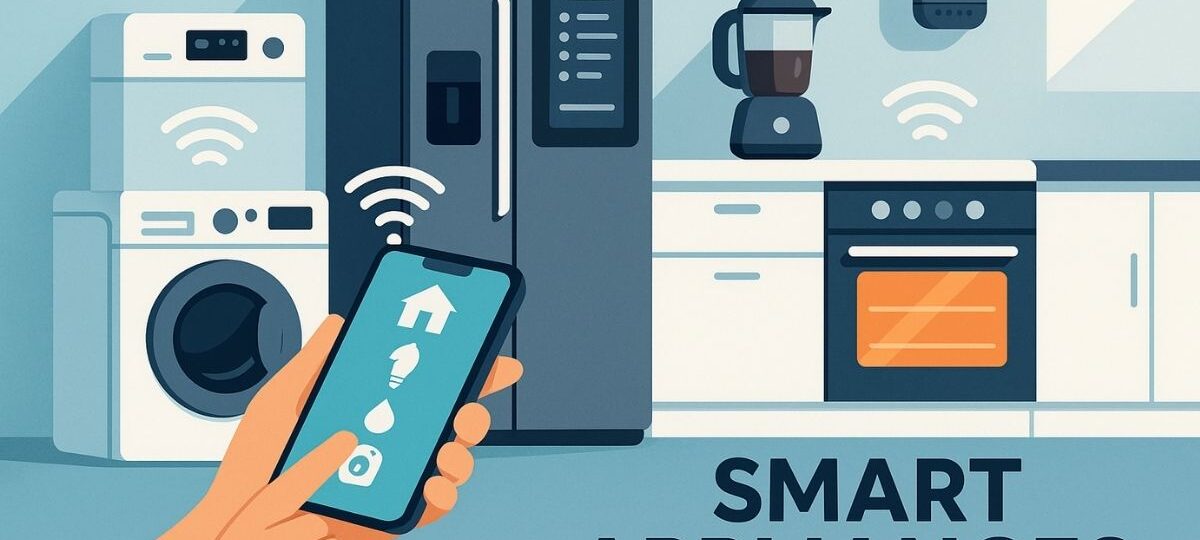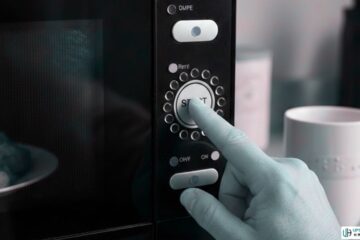Smart appliances are changing the way we live at home by making things easier and saving energy.
As we start using these gadgets more often, it’s good to know how to set them up right. Doing this means they’ll work smoothly and connect well with each other.
They can learn what you like and talk to each other, making life a lot simpler. But as they get more popular, sorting out how to install them becomes really important.
This opens up new ideas about how we can make our homes even smarter and more efficient in the future.
Trends in Smart Appliance Technology
Smart home gadgets are changing fast, thanks to Artificial Intelligence (AI) and the Internet of Things (IoT).
These techy changes make appliances easier and more fun to use. Picture a fridge that not only keeps your food fresh but also adds items to your shopping list when you’re running low—that’s the kind of ease we’re talking about.
AI and IoT let gadgets chat with each other, making daily life simpler. Think of a home where your coffee maker kicks in as soon as your alarm rings. This makes everything flow smoother, right?
Voice controls are getting popular too. Just say the word, and you can heat up your oven or start the washing machine. It’s all about making home life easier and cooler with a touch of tech.
Plus, more folks are opting for energy-saving gadgets. These not only cut down on your electricity bill but also let you keep an eye on what you’re using.
With everyone going green, these eco-friendly devices are popping up all over Britain. This shift is changing what people expect from their appliances and is making smart gadgets a must-have in our daily lives.
Installation Needs for Smart Appliances
Getting smart gadgets in your home isn’t just as easy as plugging them in.
These cool devices might need some special stuff sorted first. Like, a smart dishwasher might need its own water hookup, and a smart thermostat could need extra wiring, especially if your house is a bit older.
Also, since these devices can use a lot of power, it’s a good idea to check if your fuse box can handle them to avoid any electrical issues.
When you’re adding smart appliances, it’s smart to see if they fit in with what you’ve already got at home.
You might need to update wiring or plumbing to keep things running smoothly. Getting a pro installer is a good idea too—they’ll make sure everything’s safe, works well, and follows all the rules, so your warranties stay good.
Before you splash out on smart tech, check if your home is ready. Make sure your Wi-Fi’s strong where you want the gadgets, and see if you need any changes at home.
This way, your new smart stuff will fit right in and make your place even better without any surprises.
Home Network Considerations
A strong Wi-Fi network is key to making sure your smart home runs smoothly.
Your smart gadgets, like fridges and dishwashers, need a good connection, just like you’d need solid Wi-Fi to enjoy a movie without interruptions.
Optimising Your Network
Put your router in a central spot to boost signal strength and cover your whole house better.
Wi-Fi extenders can help get rid of those annoying dead zones, so every area has coverage. It’s also important to have enough bandwidth so all your devices work without lag.
Security Measures
Don’t forget about security. Use strong, unique passwords and keep your devices updated to keep cyber threats away.
A secure network stops unauthorised access, keeping your stuff and info safe.
With a dependable network, your smart home works like a charm, letting all your devices communicate easily.
It makes life simpler and brings cool tech into your everyday life effortlessly.
Energy Efficiency and Cost Savings
Smart appliances can really help you save on your energy bills. They keep an eye on how much power you use and give you tips to use it better.
Like, if you use your washing machine at night when electricity is cheaper, you wake up to clean clothes without spending much.
These gadgets are all about being eco-friendly too. By using less energy, they help cut down on pollution, which is great for the planet.
Think of a fridge that lowers its power use when you’re not using it much—perfect for anyone wanting to go green.
Plus, there are apps that let you see how much energy and money you’re saving over time.
Sometimes, the government or energy companies even give rebates for using smart tech.
So, getting these appliances can save you cash, help the environment, and keep you up-to-date with the latest tech trends.
Future Trends in Smart Appliance Design
The future of smart appliance design is all about mixing cool tech with good looks.
People want devices that work well and match their home style, so brands are making awesome designs that focus on being both eco-friendly and stylish.
Innovations in Sustainable Design
Appliance makers are using green materials like recycled metals and bioplastics. This not only helps the environment but also taps into the growing trend of sustainable living.
These eco-friendly gadgets work great and keep their carbon footprint low, which is a win for anyone who cares about the planet.
Modular Designs for Longevity
A big trend is modular appliances, meaning they’re easy to upgrade and fix. With parts you can swap out, these gadgets last longer, saving you money and cutting down on waste. It’s a smart move for both you and the Earth.
Blending Tradition with Technology
Another trend is mixing old-school style with new tech. These appliances fit loads of tastes by offering modern features while keeping that classic charm.
This mix appeals to both fans of vintage looks and tech lovers, setting the stage for future trends.
Installation Challenges and Solutions
Installing smart appliances can be a bit tricky, especially with power and water hookups.
Older homes might not have enough electricity for gadgets like smart ovens or fridges, so you might need an electrician to sort that out.
And for smart dishwashers or washing machines, special plumbing might be needed, which is where a plumber comes in handy.
To dodge these problems, planning ahead is super helpful. Chatting with experts before buying can save you some stress.
They can check out your home and suggest changes to fit the new appliances. This makes installation smoother and avoids surprise costs or delays.
For smaller hiccups, like connection issues, try checking the cables or looking at the manual. If there’s trouble with Wi-Fi, resetting the router or moving it closer can help.
With a bit of knowledge and planning, adding smart appliances to your home can be pretty straightforward.
Conclusion
Figuring out how smart gadgets work and what you need to set them up is key for making them fit nicely into our homes. These cool devices use AI and the internet to bring awesome perks like saving energy, cutting costs, and making life easier.
Bringing these techs into your house means it’s not just trendy, but also good for the planet. It’s super important to know what they need, like power and Wi-Fi, to make them work their best.
Keeping up with the newest stuff helps you pick the right gadgets and make your home run smoother and be more eco-friendly.
See Also: Energy Conservation: 15 Simple Ways to Save Energy at Home










